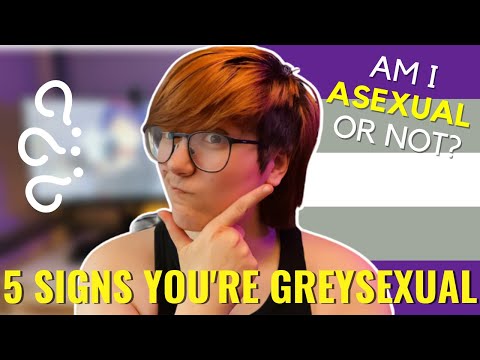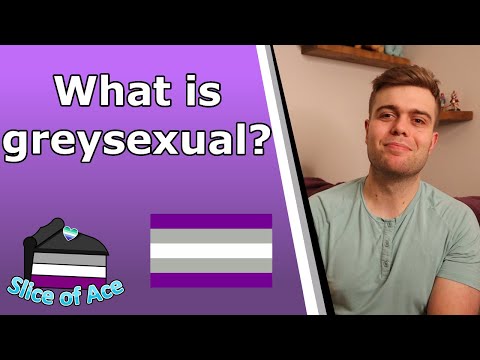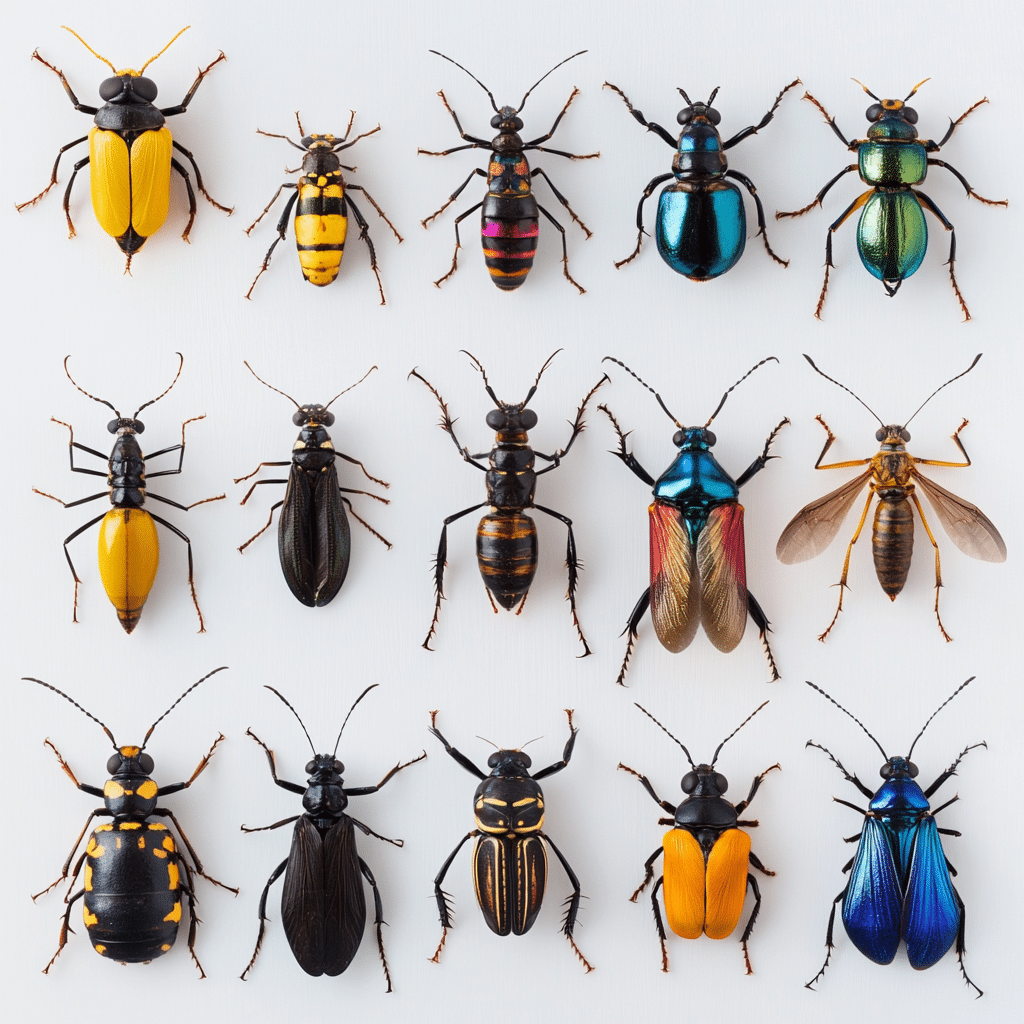Understanding sexual orientation is crucial in today’s world, where people are breaking barriers and defining their identities in many ways. One orientation that’s gaining visibility is greysexuality. This niche falls on the asexual spectrum, where individuals experience sexual attraction infrequently or only in specific situations. Recognizing and discussing greysexuality opens doors to understanding not just about sexuality itself, but also how it plays into human relationships, emotional connections, and societal norms.

Understanding Greysexuality: Defining the Spectrum
Greysexuality represents a landscape of sexual experiences that somewhat blurs the lines drawn by more recognized sexual identities. Individuals identifying as greysexual might feel sexual attraction rarely or at a low intensity. It’s like a dimmer switch instead of a flick of the light—sometimes on, but mostly off.
For some, being greysexual means feeling attraction to some people while experiencing none for others. For instance, you might find yourself wanting physical intimacy only when a strong emotional connection is established, making you demisexual—a term that overlaps somewhat with greysexuality but has its distinctions. Understanding this spectrum not only highlights the individuality of each person’s experience but also challenges the norms that push everyone into neatly defined boxes.
Greysexuality and Romantic Relationships
When it comes to relationships, greysexual individuals face unique hurdles. Society often expects that romantic connections will have a physical aspect, and not fitting into that box can make things confusing and isolating. Take Aaron, a notable greysexual advocate, who launched a campaign to shed light on greysexual experiences. He remembers the conversations he had with his partner about intimacy needing boundaries, fostering a framework of understanding that many relationships sorely need.

Top 5 Greysexual Experiences That Highlight Their Unique Journeys
1. Navigating Relationships
Relationships can feel like a minefield for greysexual individuals. Society tends to put a lot of weight on sexual intimacy, which can complicate things. Aaron’s journey emphasizes the importance of open dialogue. When his partner openly shared their greysexual identity, it built a bridge between them, showing that communication is the key to compatibility.
2. Acceptance in Different Communities
Finding a welcoming space can be a lifesaver for greysexual individuals. Organizations like the Asexual Visibility and Education Network (AVEN) offer supportive communities that normalize greysexual experiences. These platforms play a pivotal role in fostering acceptance, helping individuals feel less alien and more connected to others who truly get what they’re going through.
3. The Struggles of Self-Identification
Self-identity can be a tough pill to swallow for many greysexuals. In both heterosexual and LGBTQ+ spaces, the representation often skews toward more binary sexualities, leaving greysexuals feeling sidelined. Take Tessa, an artist who expresses her own greysexual journey through her work, advocating for visibility in a world that typically overlooks it.
4. Challenges with Labels and Terminology
The spectrum of greysexuality is rich with diversity, prompting challenging conversations about labels. The buzz around terms like demisexual can create a murky understanding of where greysexuality sits within the broader context of sexual identities. Ronald, a greysexual scholar, stresses that personalized language powers each individual’s narrative, emphasizing how unique their experiences truly are.
5. Their Voice in the Wider Sexuality Discourse
Fair representation in discussions about sexual consent is crucial, and greysexual perspectives help shine a light on this topic. Organizations that stress the significance of understanding sexual identity now include greysexual narratives, prompting more inclusive conversations. This inclusion elevates dialogue about what consent truly entails in a diverse world of identities.

The Importance of Visibility and Representation for Greysexual Individuals
As society progresses, the visibility of greysexuals becomes more crucial. Representation across various media can shape how we regard greysexuality. Shows like “Sex Education” are making strides, showcasing a range of sexual identities, including greysexual characters. This visibility not only empowers individuals but also educates society, leading to increased understanding and acceptance.
In Pop Culture
Popular culture has started reflecting greysexual experiences more than ever. By including storylines that resonate with greysexual narratives, creators can play a part in normalizing these discussions. As visibility grows, acceptance follows, benefiting both greysexual individuals and those around them.

Supporting Greysexual Individuals in Everyday Life
Creating supportive surroundings for greysexuals, such as friends and family, is essential. Understanding that greysexuals may engage in intimacy differently sets the stage for healthier and more meaningful connections. Clear communication also plays a critical role.
Through workshops and community discussions, people can learn more about varying sexual orientations, enhancing their understanding of greysexuality and its nuances. Creating spaces where individuals feel safe to share their experiences fosters deeper connections, building strong relationships based on acceptance.

Cultivating Community and Connection for Greysexual Individuals
Building a community is vital for greysexual individuals. Online platforms, including social networks like Tumblr and Reddit, are fostering vital spaces for shared stories and support. Such platforms create avenues for exchanging experiences and advice, helping individuals feel less isolated.
In-person gatherings, organized by activists like Lindsay, are turning up the heat on inclusivity. They nurture a sense of belonging, giving greysexual individuals the chance to connect face-to-face and build genuine relationships.
Closing Thoughts
The greysexual experience opens up conversations that extend our understanding of human intimacy and relationships. By embracing and advocating for diverse identities, society can increasingly foster acceptance. As we learn from the unique experiences of greysexual individuals, the world grows a bit warmer and a lot more inclusive for everyone. It’s all about celebrating what makes each individual unique while creating strong, empathetic communities that allow true connections to flourish.
By amplifying these voices and pushing for representation, we ensure that everyone—greysexual or otherwise—feels valued and heard. After all, connection, in all its forms, enriches our lives and deepens our understanding of the human experience.
Understanding Greysexual Individuals
The Spectrum of Attraction
Greysexuality falls on the ace spectrum, indicating that greysexual individuals experience sexual attraction infrequently or under specific circumstances. It’s a fascinating facet of human sexuality, and many might be surprised to learn that people identifying as greysexual navigate their experiences much like navigating the bustling streets of Tijuana Guadalajara—full of twists and surprises! This can lead to an identity that feels both unique and often misunderstood. Speaking of connections, have you ever wondered whether people in the public eye, like Kylie and Aven, are still together? Their relationship dynamics often spark curiosity, much like the greysexual experience.
Fun Facts & Trivia
Did you know that the term “greysexual” can sometimes intersect with popular culture? It’s not uncommon for greysexual individuals to resonate with the complicated relationships depicted in action series or romantic films. Just like how fans often debate the sexuality of artists like Harry Styles, individuals exploring their greysexual identity may grapple with how society views them. Interestingly, the community around greysexuality is growing, with more resources and discussions emerging to support these experiences.
Personal Stories and Community Voices
Many greysexual folks share their stories similar to how some authors discuss their hot wife Stories, providing insight into their lives and challenges. For instance, Jamirah Shutes has been vocal about her journey, shedding light on the importance of understanding different sexual orientations. This is especially vital because, unlike other identities, greysexuality emphasizes situational attraction, which can change from one moment to the next, like how long it takes to walk 5 miles varies based on individual pace and circumstance.
Ultimately, the discussion surrounding greysexuality brings more awareness and sparks curiosity—much like figuring out Ray J’s net worth can bring a new perspective to the celebrity lifestyle. Each story and experience is like a thread in the larger tapestry of human connection, unveiling the beauty in our differences while fostering an inclusive environment for all.

What does being greysexual mean?
Being greysexual means that a person experiences sexual attraction very rarely or at a low intensity. It’s on the asexual spectrum, indicating that while there is some attraction, it’s not a common experience for them.
What is an example of graysexual?
An example of graysexual could be someone who feels a spark of attraction only on rare occasions or when they have a special connection with someone, but generally doesn’t seek out sexual experiences.
What is the difference between graysexual and demisexual?
The main difference between graysexual and demisexual is that graysexual people may experience limited sexual attraction infrequently, while demisexuals usually don’t feel sexual attraction until they’ve formed a strong emotional bond.
How do you know if you’re greysexual?
To figure out if you’re graysexual, you can reflect on your feelings toward sexual attraction. If you find you only occasionally feel attracted to someone, or it’s usually low-key, then you might relate to the graysexual experience.
Can you be straight and graysexual?
Yes, you can be straight and graysexual. Sexual orientation and attraction aren’t the same thing, so someone can identify as straight and still fall under the graysexual category regarding sexual attraction frequency.
What is a zedsexual?
A zedsexual is someone who experiences sexual attraction primarily in the context of a relationship, but it’s usually more situational and not consistently felt like more typical sexual attraction.
What is another word for graysexual?
Another word for graysexual is gray-a, which is often used interchangeably to describe the same spectrum of attraction.
What is cupiosexual?
Cupiosexual refers to people who desire a sexual relationship or sexual experiences but don’t feel sexual attraction. They want intimacy but don’t experience the usual physical feeling of attraction.
What is aegosexual?
Aegosexual is when a person has a disconnect between their sexual feelings and the idea of sexual activity. They can imagine sexual scenarios but don’t want to engage in them.
What celebrity came out as a demisexual?
Jameela Jamil is a celebrity who publicly came out as demisexual, shedding light on this orientation and promoting understanding.
What is the meaning of gynosexual?
Gynosexual means having a sexual attraction towards feminine or female-presenting individuals, emphasizing the gender aspect of attraction.
What is GREY vs Demiromantic?
Greyromantic means experiencing romantic attraction infrequently or under certain conditions, which is similar to graysexual in its limited expression.
What is Freysexuality?
Freysexuality is characterized by people who enjoy the idea of being sexual with someone but don’t want to act on it. Their attraction might exist, but it doesn’t lead to physical engagement.
What is lithosexual?
Lithosexual refers to someone who feels sexual attraction but doesn’t desire any sexual contact or engagement. They might enjoy the feeling of attraction but want to keep it at a distance.
What is spectrasexual?
Spectrasexual is an orientation that conveys attraction to people across various gender identities, emphasizing fluidity in sexual attraction rather than conformity to traditional categories.
What is the opposite of graysexual?
The opposite of graysexual would be someone who experiences frequent and intense sexual attraction, such as a sexually attracted person who doesn’t fall under the asexual spectrum.
What is Freysexuality?
Freysexuality is like a mix of sexual feelings without the urge to turn those feelings into actions. It’s about being drawn to the idea rather than the actual encounter.
What is aegosexual?
Aegosexual refers to people who have a specific relationship between their sexual thoughts and their desire to act on them, often feeling more interest in the concept of sex than in the act itself.
What is reciprosexual?
Reciprosexual describes a person who only experiences sexual attraction when they know someone else is attracted to them. Their attraction depends on that mutual feeling being there.


























